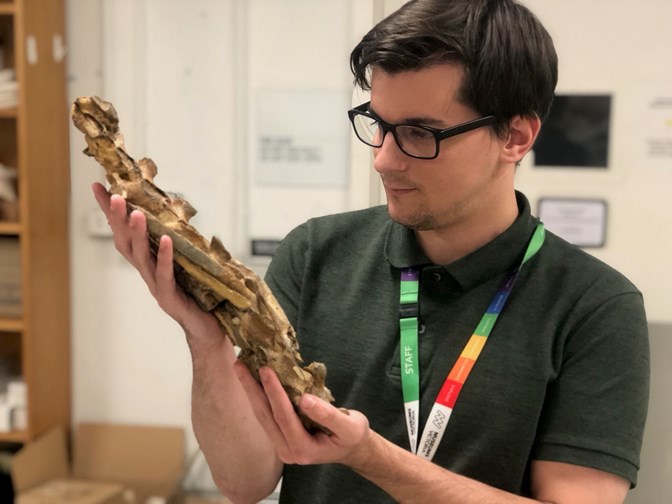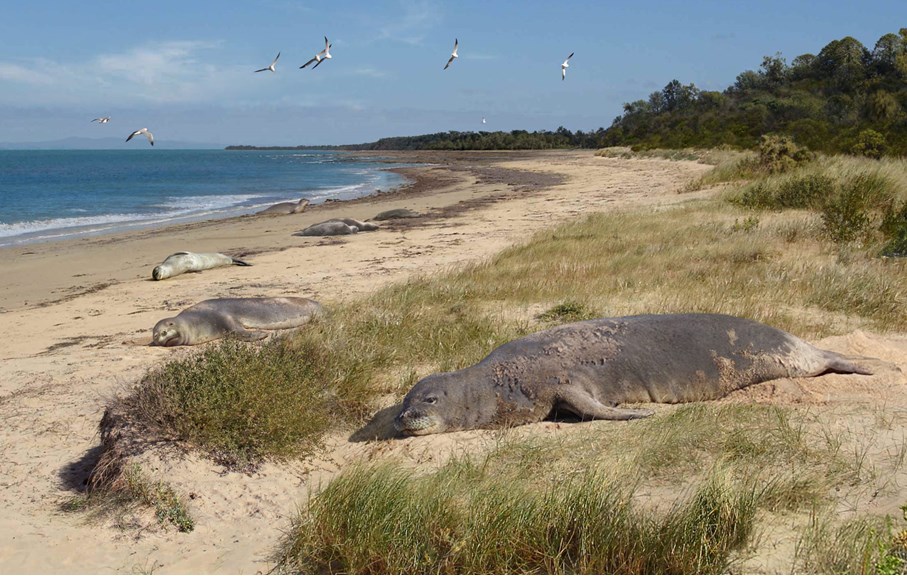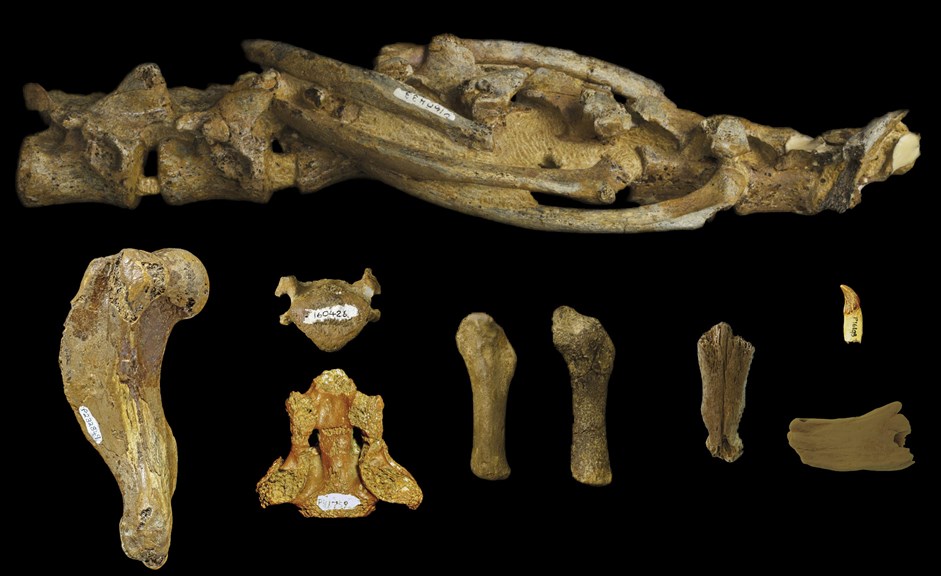Sealing the Deal: Fossil bonanza from Bayside Melbourne reveals Australia's most ancient and smallest seals
New palaeontology research from Museums Victoria represents the single greatest leap in understanding of the evolution of seals in Australia, and has been more than 88 years in the making!
- Nine new fossils of ancient prehistoric seals dating between 6 and 5 million years old have been described, more than doubling Australia’s known seal fossil record.
- The ancient seals were much smaller than Australia’s modern seals, likely constrained by the warmer and less productive seas off southern Australia.
- Lessons from these ancient fossils may give us an unsettling insight into the future of larger-bodied seals as oceans continue to warm.
New research 88 years in the making reports nine new fossils of ancient seals, more than doubling the known fossil record of seals in Australia and revealing that our ancient seals were much smaller than what we see today.
Published today in the prestigious Zoological Journal of the Linnean Society and coinciding with National Science Week, new palaeontology research lead by Museums Victoria and Monash University PhD candidate James Rule has scientifically described nine ancient seal fossils collected from the bayside suburb of Beaumaris over a span of 88 years by scientists and keen-eyed members of the public.
Analysis of the fossils, which range between 6 and 5 million years old, has shown that most ancient prehistoric seals in Australia were unrelated to those living here today, and much smaller in body size than their closest modern relatives.
‘These seals were tiny and probably very cute- perhaps resembling the seals found around the Hawaiian Islands today', says James. 'Australia's current living seals are not that closely related to these prehistoric seals, suggesting a separate evolutionary experiment occurred in seals in the past’.
The study suggests that the warmer, less productive southern oceans at this time period may have limited the maximum body size of the seals. This could mean that as the seas of southern Australia continue to warm in future, it may be harder for larger-bodied seals to survive.
‘It's tricky using patterns from the fossil past to predict the future, but this could be viewed as a warning for one possible future for Australian seals’, says James.
While the study has provided new knowledge into the evolutionary history of seals in the Southern Ocean, it has raised further questions into the unknown origins of the modern seals seen in Australia today. ‘Our fossils aren't telling us where they came from – it remains a mysterious chapter in seal evolution’.
This fossil collection is the oldest and largest record of extremely rare seal fossils in Australia, with this new study representing the biggest leap in the understanding of the history of seals in the continent in more than 150 years of scientific research.
‘This exciting new research shows how museum collections help us connect the past with the present, creating context and a clearer understanding of the fragility of our ecosystems and the critical threat they face today’ says Lynley Crosswell, CEO and director of Museums Victoria.
The discovery of a large number of rare and globally important seal fossils from Beaumaris cements the importance of this site and its unique potential to reveal the evolutionary history of Australia's marine megafauna. Most of the fossils were found by members of the public, speaking to the vital role of citizens with keen eyes and the foresight to share their finds with scientists.
One fossil from this study has been a flagship specimen for the Beaumaris site for years – a near-complete vertebral column and attached ribs. Found in the 1970s by Tim Flannery, who is now a world-renowned zoologist and palaeontologist, plus a leading voice on climate change in Australia, this fossil has played a pivotal role in driving further interest and discovery at the Beaumaris site.
‘Beaumaris is probably one of the most significant fossil sites in Australia,’ Professor Flannery said of the site. ‘It's a little window into the varnished world of Australia that just keeps on yielding new insights.’
‘We are so lucky in Victoria to have such extensive evolutionary history right here in our own backyard’ adds Dr Erich Fitzgerald, senior curator of vertebrate palaeontology at Museums Victoria and co-author of the paper. Erich points to the importance of supporting the next generation of palaeontologists: ‘These fossils still have so much to teach us about our past, present and future – we have only just begun to explore this last frontier of Australian fossils in the Lost World of Bayside.’
The study, titled ‘Colonization of the ancient southern oceans by small-sized Phocidae: New evidence from Australia’, was authored by James Rule (Museums Victoria and Monash University); Dr Justin Adams (Monash University), and Dr Erich Fitzgerald (Museums Victoria).










